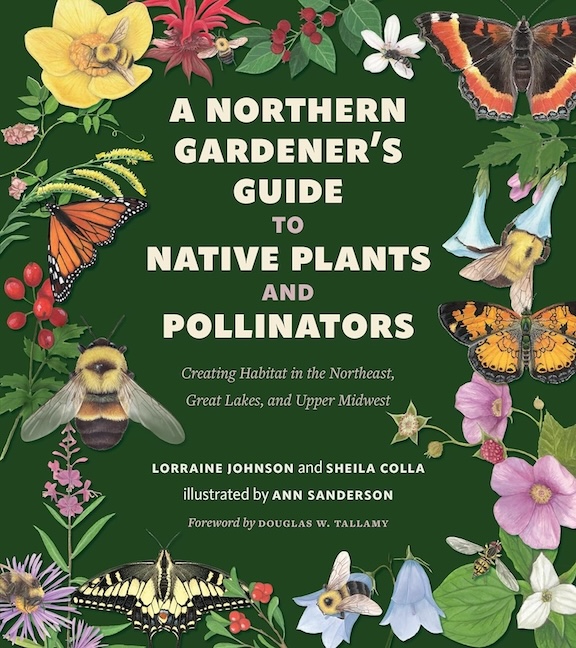
By Lorraine Johnson and Sheila Colla; illustrated by Ann Sanderson
Island Press, 2023
264 pages, paperback, $32
This book was written with gardeners in the Northeast, Upper Midwest and Great Lakes regions of the United States in mind. It’s filled with profiles of more than 300 native plants, but it’s more than a gardening guide — it’s a handbook for climate action!
Planting flowers may not sound like a “save the world” activity, but authors Lorraine Johnson and Sheila Colla show how the simple act of creating pollinator patches can increase local biodiversity, restore habitat and help reverse the effects of climate change. All you need are a few seeds, some soil, water, sunlight and a place to grow. They encourage thinking beyond the garden by planting pollinator patches in a community garden or local park, or in containers on a balcony.
The book begins with an introduction to wild bees and other native pollinators. Most people are familiar with bumblebees, but they may be less familiar with cuckoo bees, sweat bees, mining bees, leafcutter bees and the other 4,000-plus species of wild bees that live in North America. The reason wild bees aren’t as well-known as honeybees is that most of the wild bees are solitary. They don’t live in hives, they don’t make honey, and they come in a range of colors, not just black and yellow. Throughout the book you’ll also meet some of the native butterflies and moths that pollinate our flowers.
A word about honeybees. They are not native and, say the authors, starting a beehive to help pollinators is as effective as “throwing non-native invasive carp into one of the Great Lakes to help native fish populations.”
Why the focus on native plants? Because, over the long-term evolutionary timescale, they have developed relationships with insects and animals in their ecosystem. Research shows that native plants support more species of butterflies and moths than non-native plants. And while bees will collect pollen from a range of plants, including introduced species, some of their larvae depend on pollen from specific native plants in order to develop properly. Those plants include goldenrods, asters, Rudbeckia (coneflowers) and sunflowers, so if they’re already growing nearby you’ve got a head start on your pollinator patch!
The bulk of the book — more than 180 pages — is given over to native plant profiles. Arranged by blooming season, information about each plant includes soil and moisture requirements and favored companion plants. In addition to flowers, there are sections on grasses and sedges, and trees, shrubs and vines, along with color photos and illustrations. Sidebars feature plant lists for special conditions such as shade, rain gardens, boulevard gardens, and my favorite: flowers with pithy stems that provide perfect sites for nesting bees.
The book concludes with sample designs and resources. If you want to plant flowers that are native to your specific area, there’s information on how to find range maps. If you’d rather buy native plants than sow seeds, you can find that information as well.
– Sue Smith-Heavenrich, Candor, New York
This review was originally published in the summer 2024 issue of The Maine Organic Farmer & Gardener. Browse the archives for free content on organic agriculture and sustainable living practices.
